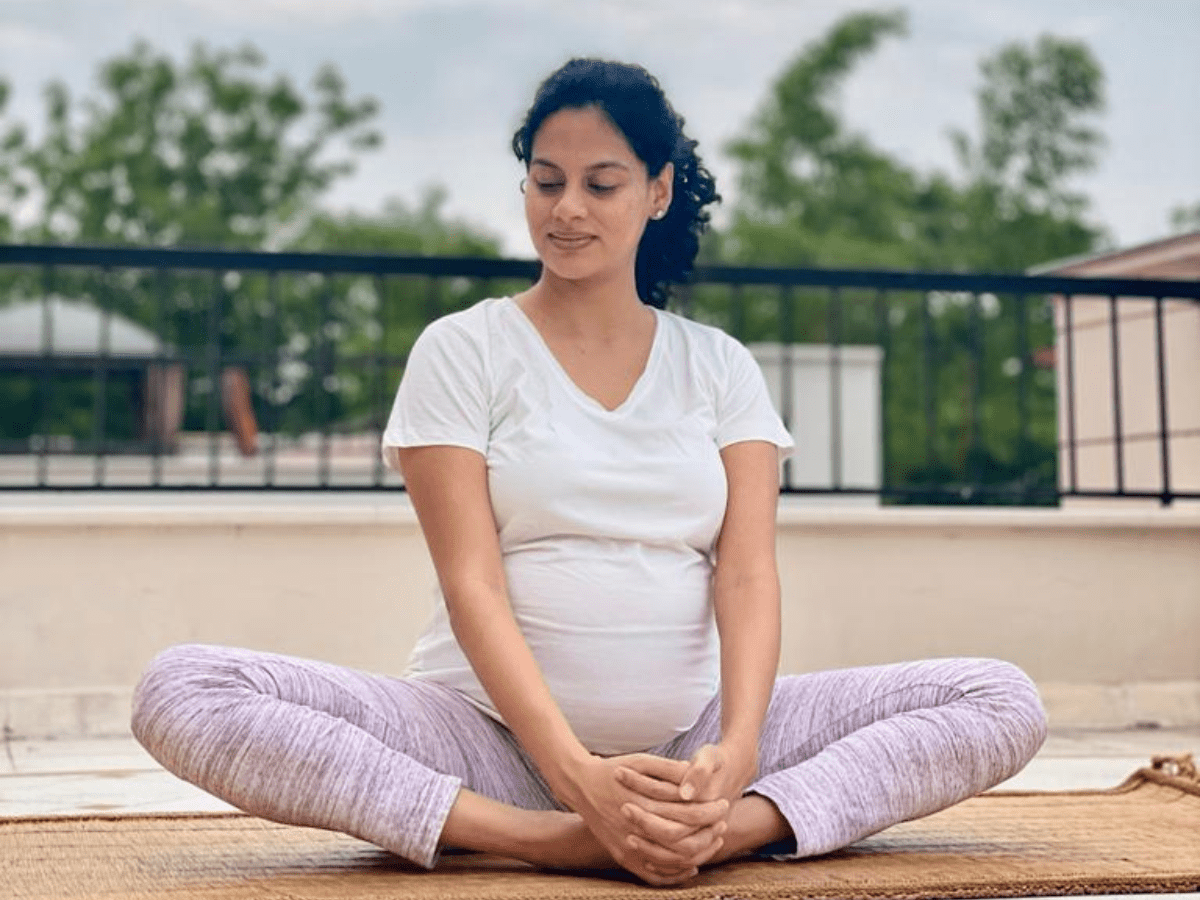
By Sanjana Gupta Taduri
Prenatal yoga is a holistic practice consisting of asanas and breathwork that is appropriate for all stages of pregnancy. It is a well-guided way to connect with your inner self and the baby in the womb.
It has become essential for de-stressing as women, along with pregnancy issues, have to juggle both professional and personal challenges. The process helps them to connect with their baby; since a mother and her baby are always regarded as a single entity rather than as two distinct entities.
The Asanas (postures) are modified according to the requirements of the mother, as whatever works for the mother also works for the baby in terms of stress relief.
This yoga is specifically designed for pregnant women and helps prepare them for giving birth naturally. The process helps the most with pelvic pain, pubic symphysis, pain in the ribs, lower back pain, etc.
Siasat.com spoke to yoga practitioners, teachers, and an instructor to solve the Frequently Asked Questions (FAQs) for pregnant women on prenatal yoga.
Asisha Raju, is a yoga practitioner, teacher, and therapist. With an experience of 5 years, she now teaches prenatal and postnatal yoga (the Garbhsanskar style) along with Hatha and therapeutic yoga.

When should a woman start prenatal yoga?
Raju said that, ideally, after conception is a good time to begin the practice.
“Getting into practice during the planning phase is even better. Though most doctors recommend starting in the second trimester, if your safety is ensured by practicing under the right, trained, and experienced guide, then it’s good to start early,” she said.
How does it help?
“It keeps the mother and baby active throughout the journey by energizing them and developing the sensitivity required to be able to listen to the body and understand its cues,” she explained.
Raju further said that prenatal yoga keeps the hormones balanced and eases the mood swings and discomforts that the mother goes through. “It helps to develop strength, flexibility, and endurance to meet the physical demands of labour and makes post-birth recovery easier,” she added.
Does it make giving birth easier?
“It plays a major role in preparing the mind and body for birth. The sensitivity and strength gained through consistent practice aid in channeling all that intense energy correctly. The focused breathing practices clear out all the anxiety of labour. The asanas help in understanding the pelvic structure, and along with breathing, the mother will be able to apply all the knowledge at the time of birth. It gives the mother the confidence to manage her birthing process,” she said.
Ramya Krishna is another expert from the city with an ERYT-500-hour registration in yoga training. Apart from prenatal and postnatal yoga, with an experience of 10 years, she also teaches Hatha yoga, Vinyasa, and Ashtanga yoga.

Is there a diet to be followed?
Krishna said that static food throughout pregnancy needs to be avoided because it is harmful to the baby and the mother. One should definitely have lots of fresh and seasonal fruits, dry fruits, and ample ghee.
Is there any yoga pose that should not be done?
“The first trimester: avoid pranayama, which heats the body; forward folds with closed feet throughout; deep twists, jumping back and jumping through Surya Namaskar. In the second trimester, avoid compressing the core, deep backbends as per the placenta placement, and deep squats. Third trimester: avoid inversions without the supervision of a teacher, closed twists, prone poses, and lying in Shavasana for a long time,” she explained.
Another city trainer Latika Krepanand teaches prenatal yoga along with Lamaze and is also a birth doula. She has 16 years of experience in the field. She also was Tennis star Sania Mirza’s instructor in her final two trimesters.

What are the benefits of prenatal yoga?
Krepanand said that with every trimester, the belly grows bigger, so the ache in the lower back increases and the ache in the upper back decreases. “It helps strengthen the muscles that are weakening with each trimester. It keeps diabetics under control,” she stated.
She also said that the process helps the mother to focus on herself and prepares her for a natural birth.
“When you do yoga, everything is involved with your breath. When you exhale, it relaxes the muscles of the body, sends a lot of energy, and improves oxygenation and blood circulation to the mother. So automatically, there is more oxygen that goes to the baby,” she explained.
Krepanand further said that pranayama, canal breathing, and kegel exercises strengthen the pelvic floor muscles, which are used during labour and post-childbirth.
“Prenatal yoga is necessary when we are living in a world where one overworks. Overworking causes stress, which affects the baby. It helps in the emotional, physical, and mental development of the baby. It works by balancing the hormones in the body,” she said.



